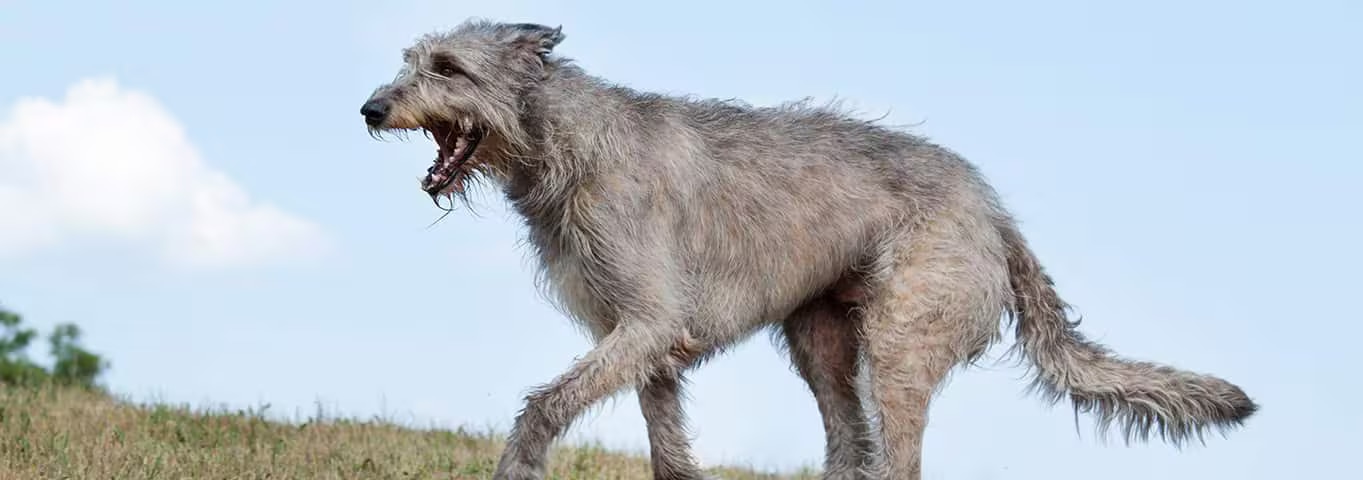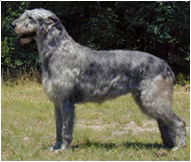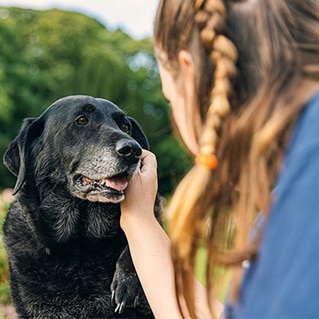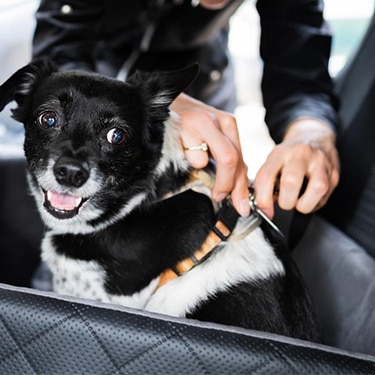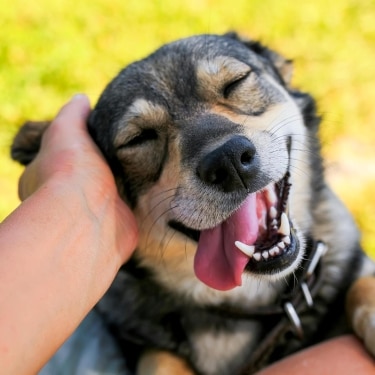Add to this a harsh, wiry coat and you have a dog that can withstand cold, damp weather and run through thick brush without getting scratched. Irish wolfhound guardians would add that the best part about the coat is the distinctive long eyebrows and beard that impart a noble expression.
Just how big are these gentle giants? The males are at least 32 inches tall, and 36 inches is not uncommon. They weigh at least 120 pounds; again, many weigh much more. Even if they were to curl up (which they never do), that's a big dog!
Irish wolfhounds have a heart as big as the rest of them. They are gentle, noble, sensitive and easygoing. Despite the fact that they can run at great speed, most of their actions around the house are in decidedly slow motion, and they are definitely not snap-to-it obedience prospects. They will eventually mind you, just at their own pace!
Just under the surface of their gentle exterior does lie the nature of a coursing hunter, so Irish wolfhound owners must be vigilant when outdoors. Like all sighthounds, Irish wolfhounds love to chase animals that are running away from them, and they can take their time responding to your calls to come back. Yet Irish wolfhounds are generally model citizens with other dogs, pets and children. Their great size is usually enough to scare away intruders; this is fortunate, as most Irish wolfhounds are pacifists and not great protection dogs.
The major consideration any prospective Irish wolfhound guardian needs to make is the matter of size. These dogs need room to stretch out and be comfortable; they are the size of another person — a person who takes up even more room because they do not walk upright. They enjoy a quiet life, and as long as you take them out for a good walk or run once a day, they will be content to sprawl around your house. Think beyond your house; where will such a large dog fit in your car? Can you control a dog that large? What if you ever had to pick him up because he was sick or hurt? Remember that everything that goes with a big dog is big: big feed bills, big medicine bills, big boarding bills — so think big!
Irish wolfhounds much prefer cold weather to warm and will often seek out a cold hard floor in the summer months. Calluses often form on their elbows because of this, and these can become unsightly and even uncomfortable for the dog.
Grooming is not difficult. The hair does not mat, but the coat should be combed a couple of times a week and dead hair should be stripped (pulled) out twice a year. Otherwise the dog will look shaggy and unkempt. Irish wolfhounds do not shed. The beard can become dirty from food and should be washed regularly, and water drips from the beard after the dog drinks.
The Irish wolfhound is of ancient origins, mentioned as long ago as 391 AD in Rome, where it was famed as a gladiator and courser. One Irish wolfhound named Aibe is indirectly credited with starting a war in the 12th century, when his owner refused an offer from the King of Ulster of 4000 cows in trade for him.
In Ireland, these imposing dogs were favored by Irish chieftains for hunting wolves and Irish elk. Such was their bravery that the breed name in Ireland is Cu Faoil; "Cu" means brave.
In the late 1800s, the Irish wolfhound became nearly extinct in Ireland because of the practice of giving away Irish wolfhounds to visiting nobility, the extinction of the wolf in Ireland, and the 1845 Irish famine. Today's Irish wolfhounds are recreated from the last existing wolfhounds crossed with the Scottish deerhound, Great Dane, borzoi, and Tibetan wolfdog. By the late 1800s, the breed was once again thriving, and it has remained one of the most recognized and admired breeds in the world.
Adopt a pet. Change a life.
Are you prepared to adopt a pet? Use these tools to make sure you are ready for the commitment.
Adopt a pet. Change a life.
Are you prepared to adopt a pet? Use these tools to make sure you are ready for the commitment.












